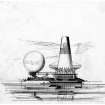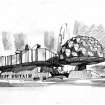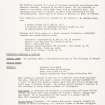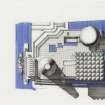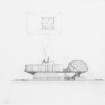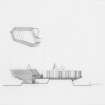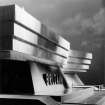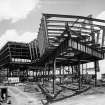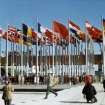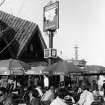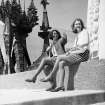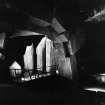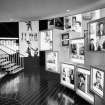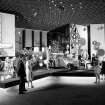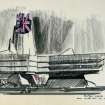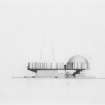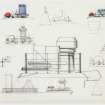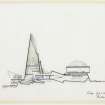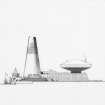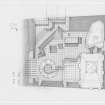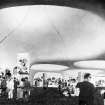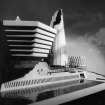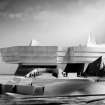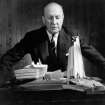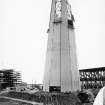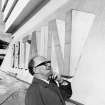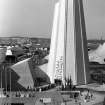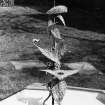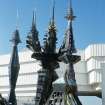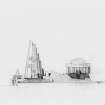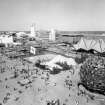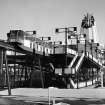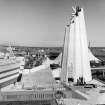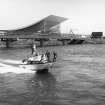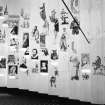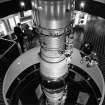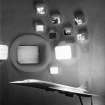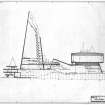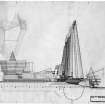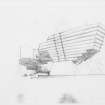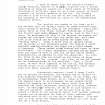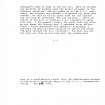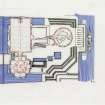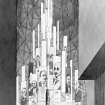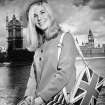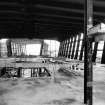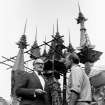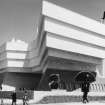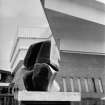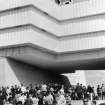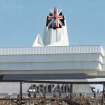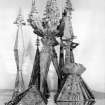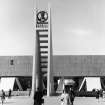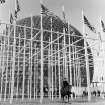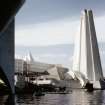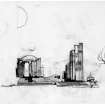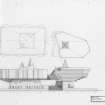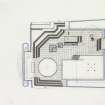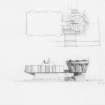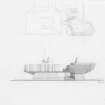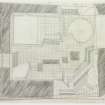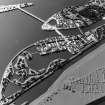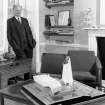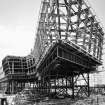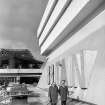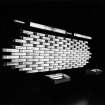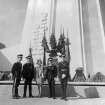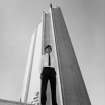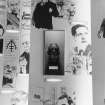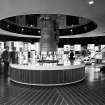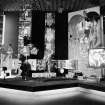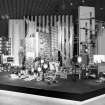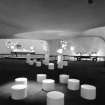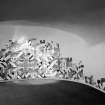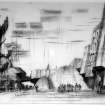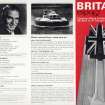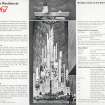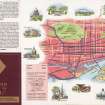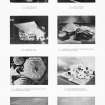Canada, Montreal, Site Of Expo 67
Exhibition Pavilion (19th Century) - (20th Century)
Site Name Canada, Montreal, Site Of Expo 67
Classification Exhibition Pavilion (19th Century) - (20th Century)
Alternative Name(s) British Pavilion; Montreal World Exhibition; Montreal World Fair
Canmore ID 284878
Site Number NON-UK 11
Datum WGS84 - Lat/Long
Permalink http://canmore.org.uk/site/284878
First 100 images shown. See the Collections panel (below) for a link to all digital images.
- Council Not Applicable
- Parish Not Applicable
- Former Region Not Applicable
- Former District Not Applicable
- Former County Not Applicable
Building Notes
In 1967 a world fair titled 'Expo 67 - Man and his World' was held in Montréal, Canada to coincide with the 100th anniversary of the Canadian Confederation. In March 1965 Sir Basil Spence was announced as the designer of the British Pavilion for the event as well as a general adviser on all visual aspects of the British participation.
Spence's design took the form of a massive white pavilion made up of two cantilevered halls and a monumental 200ft tower set out on a stepped concourse. The tower acted as the entrance to the pavilion and was topped off with a 3D Union Jack sculpture designed by Frederic Henri Kay Henrion. The exhibitions inside were split into five sections tracing the history of Britain with a final section looking to its future. A sculpture by Henry Moore stood outside the pavilion.
The British Pavilion was hailed as one of the most popular at the event and received over five million visitors.
Archive Details
Manuscript material in the Sir Basil Spence Archive includes an account of the 'Topping Out' ceremony, a custom marking a significant stage in a building's completion. In this case the framework for the tower was nearing completion thus reaching the highest point of the pavilion. The ceremony involved Spence passing the final bolt to a 'Spiderman' who ascended the tower to attach it before unfurling the Union Jack from the top.
Also included is correspondence with the five artists who designed interior exhibitions for the pavilion. Among them were Sean Kenny, who studied under Frank Lloyd Wright, and Theo Crosby, the main architect of the Globe Theatre in London. Letters show early ideas that the artists had for each section and how this might affect the interior form of the building.
Archive Summary
The Sir Basil Spence Archive holds 24 manuscript files on Expo 67 that include itineraries, invitations, and a large variety of pamphlets, maps and guides on the exhibition. There are newscuttings and articles on both the British Pavilion and the Exhibition as a whole.
The 186 photographs show two models for the pavilion, construction, examples of artwork and the pavilion in use during the exhibition. There are 112 drawings including preliminary sketch designs showing Spence's alternative proposals for the shape of the pavilion.
This text was written as one of the outputs of the Sir Basil Spence Archive Project, supported by the Heritage Lottery Fund, 2005-08.










































































































